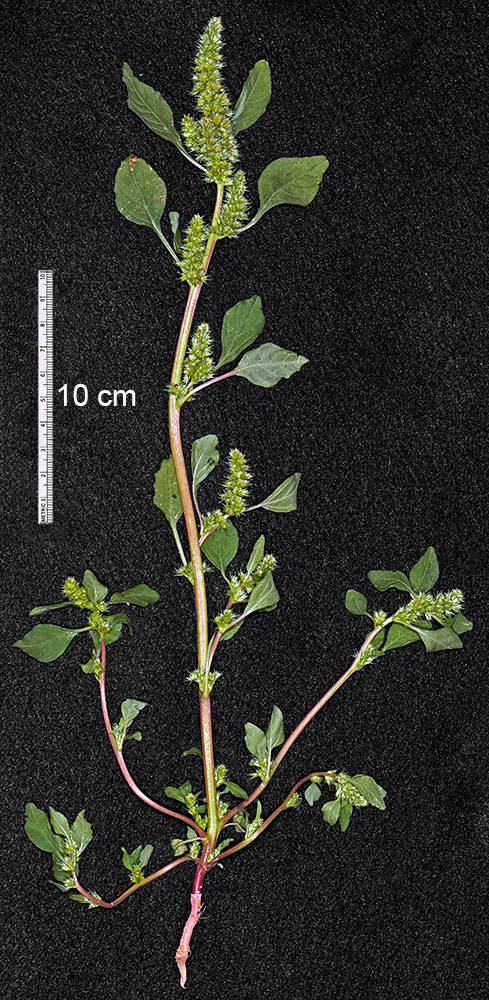Amaranthus muricatus
Amaranthus retroflexus
redroot amaranth, rough pigweed
erect, 1.5–15(20) dm; simple or branched distally, green or reddish.
blades ovate to rhombic-ovate, 2–15 cm, bases wedge-shaped;
margins entire; flat to crisped;
midveins extending to a short spine;
tips acute to obtuse;
petioles 2.5–8 cm.
terminal and axillary; erect to somewhat reflexed tightly clustered panicles, green to silvery green;
bracts numerous, lanceolate to awl-shaped, 3–6 mm.
perianth segments similar in staminate and pistillate flowers; spoon-shaped to obovate, overlapping, reflexed with age; equal to subequal;
midveins extending to a short spine;
tips rounded to notched.
perianth segments 4–5, 2–3 mm;
stamens (3)4–5.
perianth segments 5; (2)2.5–3.5 mm;
stigmas 3.
ovoid to elliptic, 1.5–2.5 mm; smooth to rugose at bases; dehiscence usually circumscissile.
lenticular; ovoid to obovoid, 1–1.3 mm, dark brown to black; shiny.
=34.
Amaranthus muricatus
Amaranthus retroflexus
Disturbed areas, fields, roadsides, streambanks. Flowering Jun–Sep. 0–1500 m. BW, Lava, Owy, Sisk, WV. CA, ID, NV, WA; worldwide. Exotic?
See also A. hybridus.
Bridget Chipman
- Local floras:
BC,
CA,
OR,
WA
- Local Web sites:
CalFlora,
CalPhotos,
Flora NW,
PNW Herbaria
WildflowerSearch
iNaturalist (observations)
USDA Plants Database
- LBJ Wildflower Center
- SEINet
- Plants of the World Online
- Encyclopedia of Life
- Wikipedia
- Google Image Search



